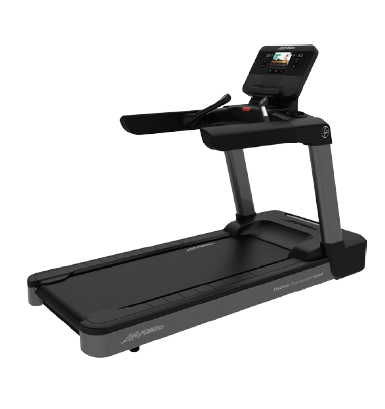Going for a walk to the gym is not hard to invent, and strength exercises are mostly for men, while exercises such as calisthenics are mostly for women. Around the treadmill is the area with the most balanced mix of men and women. Running can exercise a lot of muscles, is one of the popular fitness objects. But how many people can actually use a treadmill scientifically? Jason Fitness equipment has recently cleaned up some of the errors of exercising the treadmill for your reference.
Myth 1: As soon as you get on the treadmill, you should warm up in front of the treadmill. Leg press, squat, stretch muscles, flex and extend the hinge, etc. It increases muscle temperature, making muscles softer and less prone to injury. After getting on the treadmill, start with a "dynamic" warm-up such as slow walking and jogging, and slowly increase the amount of exercise. This process is usually suitable for 10 to 15 minutes. Also slow down when getting off the treadmill to avoid dizziness.
Myth # 2: Running too long
A runner's supply of physical substances ranges from sugar to fat to protein. It takes more than half an hour to jog to burn fat, and an hour to cross to burn protein.
Therefore, if it is the principle of heat control weight loss, the exercise can not be too short, nor too long.
Myth # 3: Run on the handle
Running is not only a movement of the legs, the harmonious swing of the arms can not only connect the balance of the whole body, but also increase the energy consumption of the upper body. Some people hold the handle when running, and the body's center of gravity tilts forward, which will increase the pressure on the lumbar spine, and cause lumbar muscle strain over time. In addition, during running, the ball of the foot hits the ground with almost five times the force of your body weight, and a forward tilt of your center of gravity gives greater force to the leg and foot hubs.

Therefore, when exercising on the treadmill, be sure to pull in your stomach and lift your chest, and tighten your lower back muscles.
Myth # 4: The higher the slope, the better
Increasing the slope and speed of the treadmill will increase the intensity of the exercise, and the choice of exercise intensity will vary from person to person. For example, middle-aged and elderly people running through the slope will increase the damage to the knee junction, and the speed is not the faster the better. In different sports, such as fast running, jogging, fast walking, climbing, etc., the proportion of energy and matter consumed by the body is different. Running fast, for example, burns more sugar, but less fat. Pure acceptance of this principle is bad luck for athletes who control their weight loss.
Myth # 5: Don't wear shoes or the wrong shoes
Some people run barefoot on treadmills or wear only socks. In fact, when running barefoot, the shock of the treadmill will cause unnecessary danger to the knees, ankles and other hubs, and the soles of the feet are easy to slip and sweat.
Wearing thick socks can play a certain role in shock absorption, but in fact, socks do not have the flexibility of sports soles and cannot replace sneakers. Therefore, wear jogging shoes while exercising on the treadmill.
Myth # 6: Watch TV while you run
Watching TV while running may distract you. If you're not careful, you can get hurt, especially those who don't know treadmill operation and exercise intensity. Skilled people who host a jog can choose something with a bright beat or relaxing music.
Myth # 7: Treadmills are only for running
The versatility of the treadmill makes it more than just a running network conveyor belt. "Add-on" items such as rowing machines, electors, and bicycles enable people to exercise in multiple areas such as heart and lung function, upper and lower limb muscles, lower back and abdominal muscles. Adding exercises such as dumbbells to the treadmill will work more muscle groups. But it should be reminded that this exercise method is fortunately held under the guidance of a professional fitness workout.